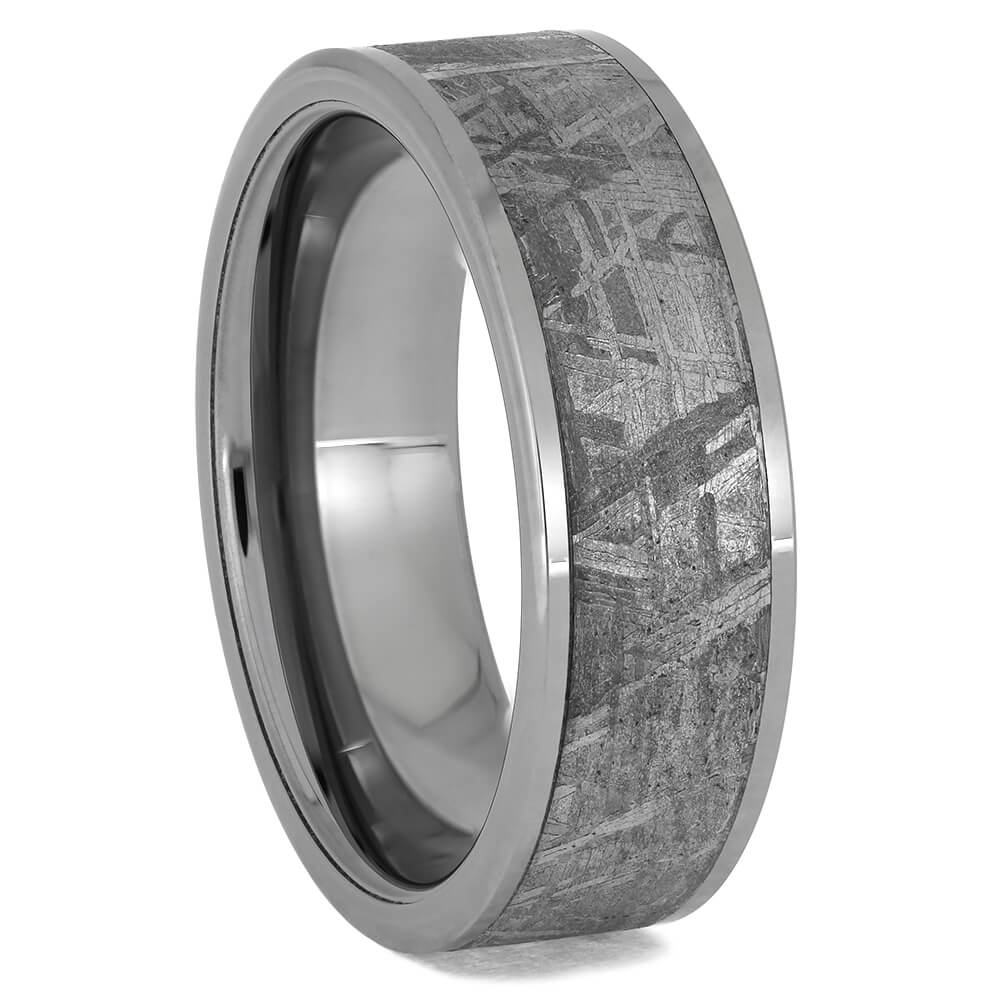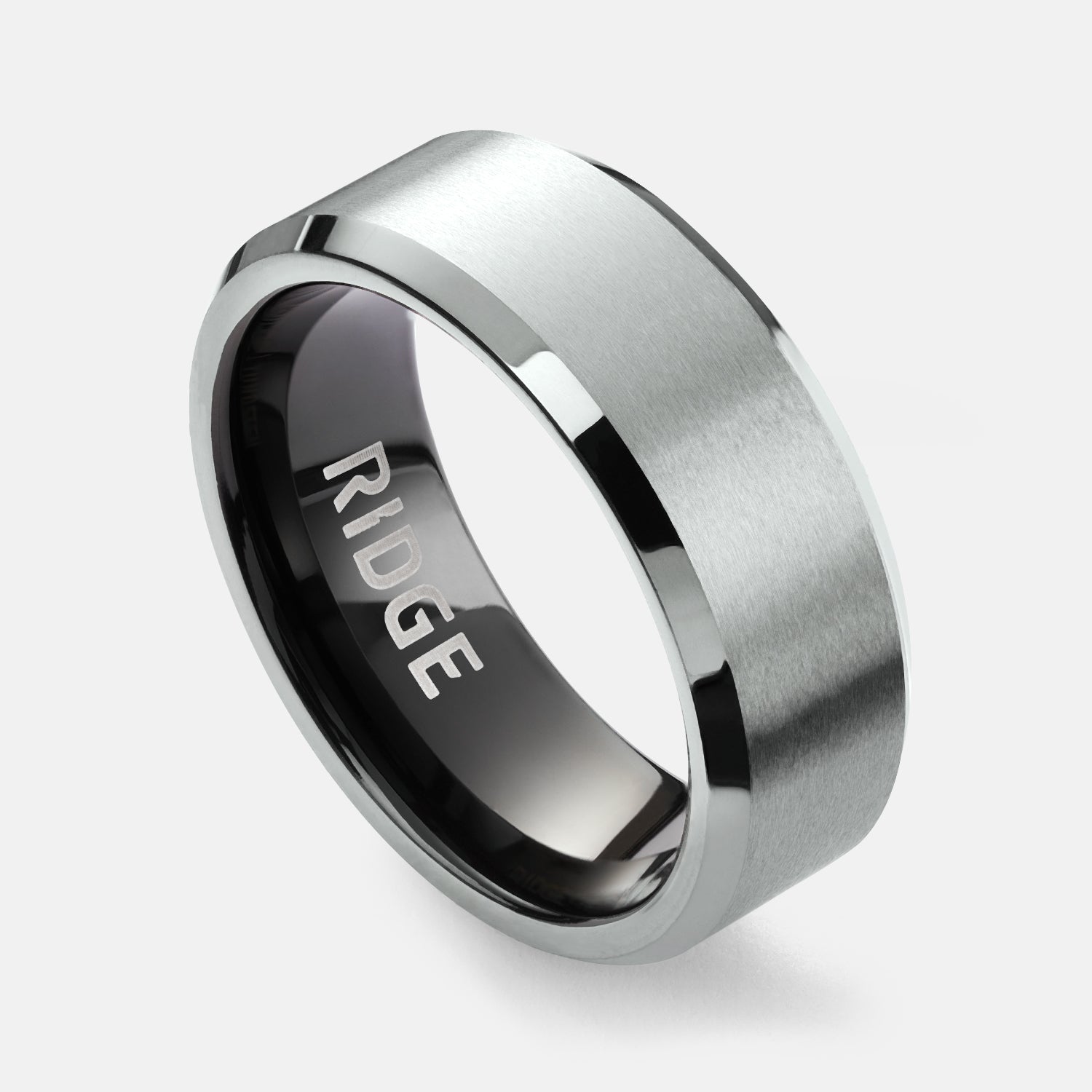Tungsten is denser and harder than stainless steel, which is more malleable and corrosion-resistant. Tungsten has a higher melting point compared to stainless steel’s lower heat tolerance.
Understanding the differences between tungsten and stainless steel is crucial for various applications in industry and consumer products. Tungsten, known for its robustness and high melting point around 3422°C, excels in high-temperature environments and is widely used in electrical and military applications.
On the other hand, stainless steel, admired for its corrosion resistance and luster, is a common choice in jewelry, cutlery, and medical instruments. These metals are selected based on their unique properties, ensuring optimal performance for the intended use. Choosing between these two materials depends on factors such as durability, weight, and exposure to corrosive elements or extreme temperatures.

Credit: www.mrtopesgolf.com
Composition
Understanding the composition of materials is key to choosing the right one for your needs. Let’s delve into what makes tungsten and stainless steel unique. Their individual components give them distinct characteristics. This section will shed light on the elemental makeup of both tungsten and stainless steel.
Tungsten Composition
Tungsten, also known as wolfram, is a heavy metal known for its robustness. Its composition is relatively straightforward:
- Pure elemental tungsten: a high melting point over 3400°C
- Minor amounts of carbon and oxygen: often found in impurity concentrations
When used in alloys or jewelry, tungsten includes additional elements:
- Nickel: to aid in malleability
- Carbon: to form tungsten carbide, making it even harder
Stainless Steel Composition
Stainless steel is an alloy composed of several elements fused together:
| Element | Percentage |
|---|---|
| Iron (Fe) | Around 70% |
| Chromium (Cr) | Minimum 10.5% |
| Nickel (Ni) | Varies (commonly 8-10%) |
| Manganese (Mn) | Up to 2% |
| Silicon (Si) | Up to 1% |
| Carbon (C) | Up to 1.2% |
| Molybdenum (Mo), Titanium (Ti) & Others | Small amounts |
These elements enhance the steel’s properties such as corrosion resistance, strength, and flexibility.

Credit: jewelrybyjohan.com
Physical Properties
The physical properties of materials are key to understanding their strengths and limitations. When comparing tungsten and stainless steel, their unique physical characteristics determine their suitability for different applications. So, let’s dive deep into the fascinating world of metals and learn what sets the physical properties of tungsten and stainless steel apart.
Tungsten Physical Properties
Tungsten, also known as wolfram, is a metal known for its remarkable robustness. Here are some of its standout physical attributes:
- High density: At 19.25 g/cm³, it’s notably denser than many other metals.
- Extraordinary melting point: Tungsten melts at 3422°C, the highest of all metals.
- Exceptional hardness: It’s very hard, which makes it scratch-resistant.
- Heavy: Its hefty weight is attributed to its dense atomic structure.
Stainless Steel Physical Properties
In contrast, stainless steel is an alloy composed of iron, carbon, and at least 10.5% chromium. It boasts a set of different physical qualities:
- Lower density: Typically, stainless steel has a density of about 8 g/cm³.
- Moderate melting point: Stainless steel melts at around 1450°C.
- Hard but malleable: It’s hard but can be shaped with less effort than tungsten.
- Corrosion resistance: The chromium content provides excellent anti-rust properties.
Understanding these properties helps in selecting the right metal for a given task. Tungsten is ideal for high-temperature applications while stainless steel is chosen for its corrosion resistance and formability.
Strength And Durability
Exploring the powerhouses of materials, strength and durability stand as crucial factors for industrial and consumer product choices. When it comes to tungsten and stainless steel, a comparison of their robustness and longevity reveals distinct characteristics.
Tungsten Strength And Durability
Tungsten, famed for its incredible strength, possesses the highest tensile strength among all metals. This exceptional feature translates to outstanding durability and a resistance to scratching that surpasses most materials. It highlights this metal’s suitability for heavy-duty applications where wear and tear are a daily challenge. Add to that its high melting point, and tungsten becomes nearly indestructible in regular conditions.
- Highest melting point of all metals at 3422°C.
- Resistant to corrosion and oxidation.
- Four times harder than titanium.
Stainless Steel Strength And Durability
In the realm of stainless steel, its corrosion-resistant property stands out. Thanks to its alloy composition which includes chromium, stainless steel offers excellent durability against rust and degradation. While it may not match tungsten’s hardness, its ability to withstand varied environments makes it ideal for kitchenware, surgical instruments, and architecture. Its strength is substantial, yet it can be easily formed and welded, offering both resilience and versatility.
| Feature | Stainless Steel |
|---|---|
| Mohs Hardness | <5 (around 4.5) |
| Corrosion Resistance | High (especially with increased chromium content) |
| Temperature Resistance | Up to 870°C (varies by grade) |
Both materials are champions in their right, with tungsten leading in sheer strength and stainless steel excelling in adaptability.
Corrosion Resistance
Metals like tungsten and stainless steel are popular for their strength. A key feature of these metals is corrosion resistance. This means they can resist damage from rust and other chemicals. Their corrosion resistance is why they are used in jewelry and industry. Below, learn how tungsten and stainless steel stand up to corrosion.
Tungsten Corrosion Resistance
Tungsten shines in its ability to resist corrosion. It does not tarnish. It stands strong against many chemicals. Even in rough conditions, tungsten keeps its polish and beauty. Here’s how it tackles corrosion:
- Does not react with oxygen at room temperature. This means no rust.
- Resists acids and needs high temperatures to react meaning more safety.
- Maintains its look over time even with daily wear.
Stainless Steel Corrosion Resistance
Stainless steel also has a good fight against corrosion. It contains chromium which creates a protective layer. This layer keeps rust away. Here are ways stainless steel handles corrosion:
- Chromium oxide layer protects the metal beneath meaning stronger defense.
- Can handle exposure to water and air without losing its shine.
- Various grades offer different levels of corrosion resistance. More chromium equals more protection.
Both metals are reliable when it comes to resisting corrosion. Your choice may depend on the level of harshness they will face. Tungsten and stainless steel act as heroes in a world threatened by corrosion.
Applications
Let’s explore where tungsten and stainless steel shine! Different industries use these metals due to their unique properties. Tungsten’s toughness fits well for tough jobs, while stainless steel’s resistance to corrosion makes it ideal for daily use.
Tungsten Applications
Tungsten stands out in fields that demand durability:
- Electronics: Tungsten is common in phone vibrations and TV tubes.
- Lighting: Its high melting point makes tungsten perfect for light bulb filaments.
- Military: Tungsten’s heft is ideal for projectiles and armor-piercing rounds.
- Jewelry: Wedding bands are made from tungsten for its long-lasting shine.
- Industrial: Tungsten carbide in cutting tools keeps edges sharp longer.
Stainless Steel Applications
Stainless steel is ubiquitous due to its versatility:
- Construction: It shapes our cities in buildings, bridges, and monuments.
- Medical: Stainless steel’s cleanliness is key for surgical tools and implants.
- Cookware: Pots, pans, and utensils rely on stainless steel’s non-corrosive surface.
- Automotive: Strong yet lightweight, stainless steel is in cars and trucks.
- Household: Appliances, cutlery, and fixtures often use stainless steel.
| Tungsten | Stainless Steel |
|---|---|
| Lighting | Construction |
| Military | Medical |
| Jewelry | Cookware |
| Industrial Tools | Automotive |
| Electronics | Household |
Cost Comparison
When considering the purchase of jewelry or industrial products, the cost is a crucial factor. Let’s compare the prices of tungsten and stainless steel to help you make an informed decision.
Tungsten Cost
Tungsten, known for its robustness and high melting point, often carries a higher price tag. The cost can fluctuate depending on the market demand, availablity, and purity of the tungsten used in the product.
- Quality matters: Higher quality equals a higher price.
- Rarity: Tungsten is rarer than stainless steel, influencing cost.
- Processing: Its tough nature requires advanced tech to mold, raising expenses.
Stainless Steel Cost
Stainless steel, on the other hand, is more common and budget-friendly. It’s widely available and easier to work with, which keeps its costs lower than tungsten.
| Factors | Stainless Steel |
|---|---|
| Availability | Plentiful |
| Manufacturing | Less Complex |
| Price Range | Generally lower |
It is crucial to note that prices can also vary based on design complexity and brand reputation.
Manufacturing Process
The journey from raw materials to finished products is fascinating, particularly when we compare tungsten and stainless steel. Each metal boasts a unique creation story shaped by intricate manufacturing processes. Let’s dive into the details of how these robust metals are crafted.
Tungsten Manufacturing Process
Tungsten, known for its exceptional strength and high melting point, undergoes a complex production routine. Here’s how it’s done:
- Extraction: Tungsten ore is mined and crushed.
- Purification: It then undergoes chemical processing to form tungsten oxide.
- Reduction: This oxide is reduced with hydrogen to get pure tungsten powder.
- Forming: The powder is pressed into desired shapes.
- Sintering: High temperatures bond the powder to form solid pieces.
Stainless Steel Manufacturing Process
In contrast, stainless steel is an iron alloy that incorporates other elements. Here’s a snapshot of its production:
- Melting: Iron ore is combined with chromium and nickel in a furnace.
- Casting: The molten alloy is cast into molds or slabs.
- Forming: These slabs are hot or cold rolled into sheets, bars, or other forms.
- Heat Treatment: To enhance strength, rolled products are then heat-treated.
- Surface Treatment: Finally, they may undergo processes like polishing.
Both tungsten and stainless steel require precise control at each step. This ensures the materials meet rigorous standards for durability and performance.
Environmental Impact
Understanding how materials affect the environment is crucial. Both tungsten and stainless steel have unique environmental footprints. Let’s look at their impacts.
Tungsten Environmental Impact
Tungsten is a naturally occurring element. Often, it is mined in China and Russia. Mining affects landscapes and ecosystems. It creates waste that can harm both soil and water. Despite this, tungsten has a low-toxicity level for humans and wildlife. Importantly, tungsten products are highly durable. This durability means less need for frequent replacement. It contributes to less waste over time.
- Mining disturbs natural habitats
- Waste can lead to soil and water pollution
- Low human and wildlife toxicity
- Durable products mean less environmental waste
Stainless Steel Environmental Impact
Stainless steel is an iron alloy with chromium. It is famous for corrosion resistance. The production involves high energy consumption and releases CO2. It also uses non-renewable resources like nickel and chromium. Yet, stainless steel is highly recyclable. This means it often has a second life. Recycling reduces the environmental footprint significantly.
- High energy production with CO2 emissions
- Uses non-renewable resources
- May cause air and water pollution
- Recycling reduces its environmental impact
In conclusion, both tungsten and stainless steel have environmental impacts. However, their longevity and recyclability are crucial factors to consider. They play a role in mitigating their overall environmental footprints.
Maintenance Requirements
Understanding the nuances of metal maintenance helps in preserving their luster and integrity. Tungsten and stainless steel, widely used for jewelry and products, have distinct care needs.
Tungsten Maintenance
Caring for tungsten is quite simple due to its robustness.
- Use a soft cloth and mild soap to wipe it.
- Avoid harsh chemicals; they are unnecessary.
- No special cleaners needed; water will do.
- Store it separately to prevent scratches.
Stainless Steel Maintenance
Stainless steel requires more attention but remains low-maintenance.
- Regular cleaning with soapy water is beneficial.
- Polishing occasionally maintains its shine.
- Avoid chlorinated water to prevent damage.
- Store away from other metals to reduce scratching.
| Metal Type | Maintenance Level | Cleaning Frequency | Special Care Instructions |
|---|---|---|---|
| Tungsten | Low | As needed | Store separately |
| Stainless Steel | Moderate | Regularly | Avoid chlorine |

Credit: ridge.com
Suitability For Different Uses
Choosing between tungsten and stainless steel depends on the use. Each metal has unique qualities, making it perfect for different applications. Let’s explore these differences.
Tungsten Uses
Tungsten is known for its robustness. Its impressive hardness makes it ideal for:
- Jewelry: Especially wedding bands that can resist scratches.
- Industrial Applications: Cutting tools and machinery due to high wear resistance.
- Lighting: Filament in light bulbs for its durability at high temperatures.
- Aerospace: In rocket engine nozzles to withstand extreme heat without melting.
Stainless Steel Uses
Stainless steel, known for resisting rust, shines in various uses:
- Cookware: Kitchen utensils and appliances due to easy sterilization.
- Medical Equipment: Surgical tools for its non-reactive nature.
- Architecture: Construction materials for buildings and bridges for long-lasting structures.
- Watches: Watch cases and bracelets for durability and style.
Health And Safety Considerations
When choosing jewelry or industrial materials, health and safety are crucial. Metals like tungsten and stainless steel are popular. Let’s explore their safety aspects.
Tungsten Health And Safety
Tungsten boasts remarkable durability. But one must be aware of its safety:
- Non-toxic: Tungsten is biologically inert, posing no health risks when handled ord used in jewelry.
- Hypoallergenic: It’s a go-to for people with metal allergies, as it rarely causes skin reactions.
- Emergency removal: Though hard, emergency removal is possible—a comfort for those concerned about wearing tungsten jewelry.
Stainless Steel Health And Safety
Stainless steel is another safe option:
- Corrosion-resistant: Less likely to corrode, stainless steel is safe against skin irritation over time.
- Nickel content: Some stainless steel blends contain nickel. This can be a concern for those with allergies.
- Ease of sanitization: Its surface can be easily cleaned, making it a hygienic choice in medical and kitchen use.
Market Trends
Understanding the market dynamics for different materials is crucial for buyers and sellers. Tungsten and stainless steel are no exception. Their market trends reveal consumer preferences, technological developments, and economic shifts.
Tungsten Market Trends
Tungsten, known for its high melting point and density, has unique applications. The demand in diverse industries shapes its market trends.
The electronics industry drives major demand due to tungsten’s conductive properties. With the rise of smartphones, computers, and other gadgets, the need for tungsten surges.
- Military equipment manufacturers require tungsten for its hardness.
- Jewelry lovers prefer tungsten for durable, scratch-resistant rings.
- Increase in LED lighting boosts tungsten use in lighting components.
Markets indicate a steady demand with growing technological advancements and a shift towards energy-efficient lighting. Prices fluctuate with mining output and export regulations in key producing countries.
Stainless Steel Market Trends
Stainless steel, recognized for its corrosion resistance, is common in construction, automotive, and cookware industries.
With urban growth, construction activities spur stainless steel consumption. Modern architecture often includes stainless steel for its aesthetic and practical qualities.
- Boost in construction projects.
- Automotive industry favors stainless steel for rust resistance.
- Cookware demand rises due to popularity of professional-grade kitchens.
The eco-friendly movement has a dual effect. It increases stainless steel recycling, yet demands more production for clean energy infrastructures, such as wind turbines. Market analysts see a positive growth trajectory, albeit affected by global economic conditions.
Future Outlook
The industrial world continuously evolves, introducing new technologies and applications. Let’s explore the future outlook for both tungsten and stainless steel, which play significant roles in various industries.
Tungsten Future Outlook
Tungsten’s unique properties foresee its use expanding. Here’s what’s on the horizon:
- Increased Demand: Aerospace and military will need more tungsten.
- Medical Advancements: More use in medical devices for its density.
- Electronics Growth: Tungsten’s high melting point suits electronics.
Research into eco-friendly mining methods will likely rise. Companies will improve recycling techniques. This is due to tungsten’s rarity and cost.
Stainless Steel Future Outlook
Stainless steel’s versatility ensures its continued use. Here’s what’s anticipated:
- Construction Boom: Infrastructural projects will boost stainless steel use.
- Green Energy: Essential in solar, wind, and other renewable energy sectors.
- Innovation in Alloys: New stainless steel alloys for better performance.
Recycling stainless steel will also be a focus. It’s to preserve resources and reduce environmental impact.
Frequently Asked Questions Of What Is The Difference Between Tungsten And Stainless Steel
Why Choose Tungsten Over Stainless Steel?
Tungsten is significantly harder than Stainless Steel, resisting scratches and wear. Its density gives it a luxurious heft. However, it can shatter if dropped on a hard surface. Stainless steel is more malleable and less prone to breaking.
Is Tungsten Heavier Than Stainless Steel?
Yes, tungsten is heavier than stainless steel. Its higher density leads to a weightier feel in jewelry, which some people prefer for a premium sensation. Stainless steel is lighter, making it comfortable for everyday wear.
Can Stainless Steel Match Tungsten’s Durability?
Stainless Steel is durable and corrosion-resistant, but Tungsten outshines in hardness. Tungsten boasts the highest melting point and scratch resistance among metals used in jewelry, making it superior in terms of durability.
How To Care For Tungsten Vs. Stainless Steel?
Tungsten requires minimal care, its scratch resistance preserving its shine without polishing. For Stainless Steel, regular cleaning and occasional polishing are recommended to maintain its luster and prevent tarnish.
Conclusion
Understanding the differences between tungsten and stainless steel is crucial for making informed decisions for your needs. Tungsten offers superior hardness and scratch resistance, while stainless steel excels in affordability and versatility. When choosing the right material for your application, consider these unique properties to ensure longevity and satisfaction.
